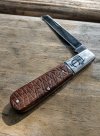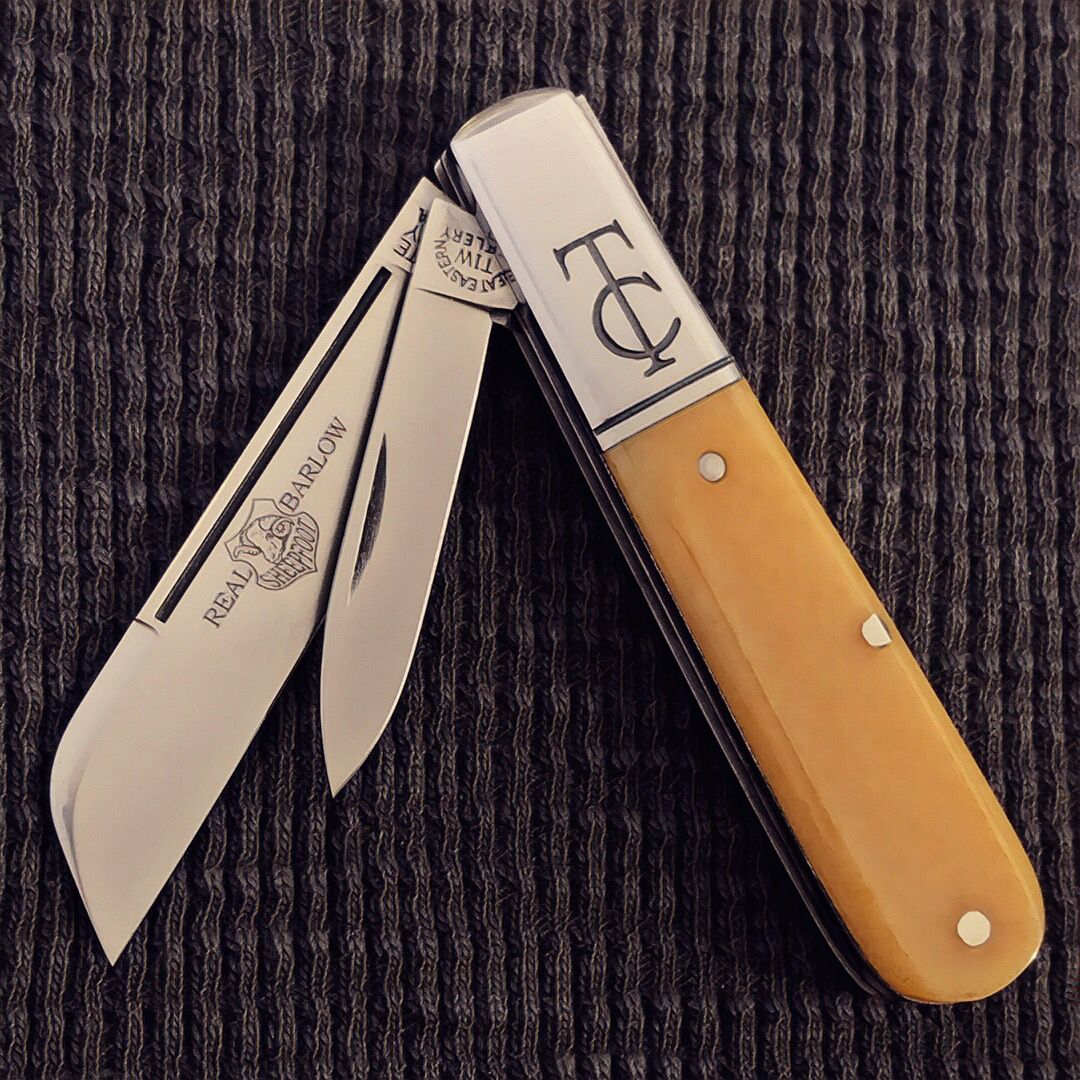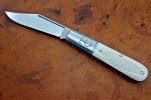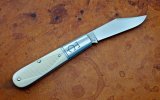-
The BladeForums.com 2024 Traditional Knife is available! Price is $250 ea (shipped within CONUS).
Order here: https://www.bladeforums.com/help/2024-traditional/
You are using an out of date browser. It may not display this or other websites correctly.
You should upgrade or use an alternative browser.
You should upgrade or use an alternative browser.
What Makes a Good, Traditional Barlow?
- Thread starter waynorth
- Start date
waynorth
Dealer / Materials Provider
- Joined
- Nov 19, 2005
- Messages
- 33,354
It's great, Philllll!! Definitely character-building modifications!!
Now, I think you have added value and utility to that knife as well!!

- Joined
- May 16, 2018
- Messages
- 4,183
I like it!

Pgg365247
Gold Member
- Joined
- Jul 30, 2012
- Messages
- 222
I like what you did there. I think it turned out really nice. I have a spear point from this past summers release but haven't been able to snag my #15 ancient TC in scratted bone. It has been my experience that they rarely come up and when they do, they are gone in mere seconds. I literally dream about one day owning one.
- Joined
- Jan 8, 2009
- Messages
- 1,731
I like what you did there. I think it turned out really nice. I have a spear point from this past summers release but haven't been able to snag my #15 ancient TC in scratted bone. It has been my experience that they rarely come up and when they do, they are gone in mere seconds. I literally dream about one day owning one.
I am in the same boat
- Joined
- May 18, 2014
- Messages
- 9,008
As I am as well.
draggat
Gold Member
- Joined
- Jul 26, 2010
- Messages
- 3,068
They are not traditional American pattern Barlows to be sure, but the pattern is English not American in origin. Some English makers began modifying the pattern quite a bit after their sale in the USA became impossible as a result of tariffs and the difficulty of competing with the higher cost efficiency of mechanical mass production techniques. The American Russell firm first was able to mass produce the pattern at at much lower cost than the British could compete with, and kept the price low by not making changes that would require updates in tooling. This caused the long bolsters to be recognized in the USA as a sign of extra strength at low cost, long after they really added any additional strength to the design (even the hollow metal shell handled Barlow patterned knives once made in the USA have extra long bolsters, although they are held together only by by domed rivets within the hollow bolsters). The Sheffield production of knives of this pattern continued to evolve as the focus for their export shifted to other colonial areas (indeed, the pattern Wright's uses is very similar to some versions of the "Bunny Knife" exported from Sheffield to Australia). The British pattern of Barlow with its somewhat shorter bolsters may be seen as a variant, just as the depression era American hollow shell handled Barlows may be seen as such. I do consider them as British Barlows, rather than American Barlows.
Thanks for the response!! Your answer completely makes sense. So often manufacturers call a knife something when it isn’t actually that..... I have a Queen knife, for instance, with similar length bolsters and it is named a Barlow...
Here’s another question then.....
I know that the Barlow was the first bolstered, production folding knife and that the long bolster added to its strength (correct me if I’m wrong here).... was it pinned more than in just the pivot? If not, how did it acquire it’s added strength? I know that modern bolsters are soldered to the liners and then pinned in the pivot but I’m making an assumption this didn’t happen in the beginning?
I’m sorry to be asking stupid questions.... just very curious as to the original construction and cascading improvement on these fine knives?
Maybe someone could PM me reference or link to which I seek?
Fantastic photos here BTW!!
Campbellclanman
Platinum Member
- Joined
- Mar 10, 2007
- Messages
- 15,822
Nice to see that TC of Evans Philllll- Thats a real beauty! Evan is certainly a Talented Lad for sure!
- Joined
- May 18, 2014
- Messages
- 9,008
Pgg365247
Gold Member
- Joined
- Jul 30, 2012
- Messages
- 222
Exquisite Barlow cigarrodog... what exactly is the handle material on that beauty?
I know that the Barlow was the first bolstered, production folding knife and that the long bolster added to its strength (correct me if I’m wrong here).... was it pinned more than in just the pivot? If not, how did it acquire it’s added strength? I know that modern bolsters are soldered to the liners and then pinned in the pivot but I’m making an assumption this didn’t happen in the beginning?
The earliest versions (pre-1870's) that were made in Stannington and Sheffield had bolsters that were forged all in one piece with the liners (which are rather thick) the thicker iron of the bolsters was very rigid indeed (think of the steel slab handles on all stainless knives). There are some nice examples posted in the "old knives" thread.
- Joined
- May 18, 2014
- Messages
- 9,008
I bought it on the secondary last year or so I can’t be certain. Is it not real? Sure looks good. What does STL mean?
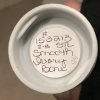
- Joined
- Apr 24, 2013
- Messages
- 988
STL = steel as in all steel bolsters , liners etcI bought it on the secondary last year or so I can’t be certain. Is it not real? Sure looks good. What does STL mean?
View attachment 1076842
Pgg365247
Handles are really dark which has got people asking . Ive seen smooth ivory bone get darker ( not as dark as yours ) . Could also seem darker than actual in photo?
waynorth
Dealer / Materials Provider
- Joined
- Nov 19, 2005
- Messages
- 33,354
STL means all steel; bolsters and liners. I remember now some of those were quite "amber" colored. The ones I have are much lighter. Someone could have "darkened" it?! Or it could be "as-made". Either way it looks great!!

- Joined
- May 23, 2013
- Messages
- 13,444
Evan saw his knives being posted, and having finished the checkering on this one, sent me pics before mailing it off!! The handles were someone's teeth from decades ago!!
View attachment 1076749 View attachment 1076750
Fantastic!
- Joined
- May 18, 2014
- Messages
- 9,008
Thank you for the answer. I usually take pictures in my garage. Most are shot in open shade, but playing with natural light and different angles could affect darker vs lighter. The end goal for me is what will reveal the most detail in as dramatic fashion as a still subject can be.STL = steel as in all steel bolsters , liners etc
Handles are really dark which has got people asking . Ive seen smooth ivory bone get darker ( not as dark as yours ) . Could also seem darker than actual in photo?

